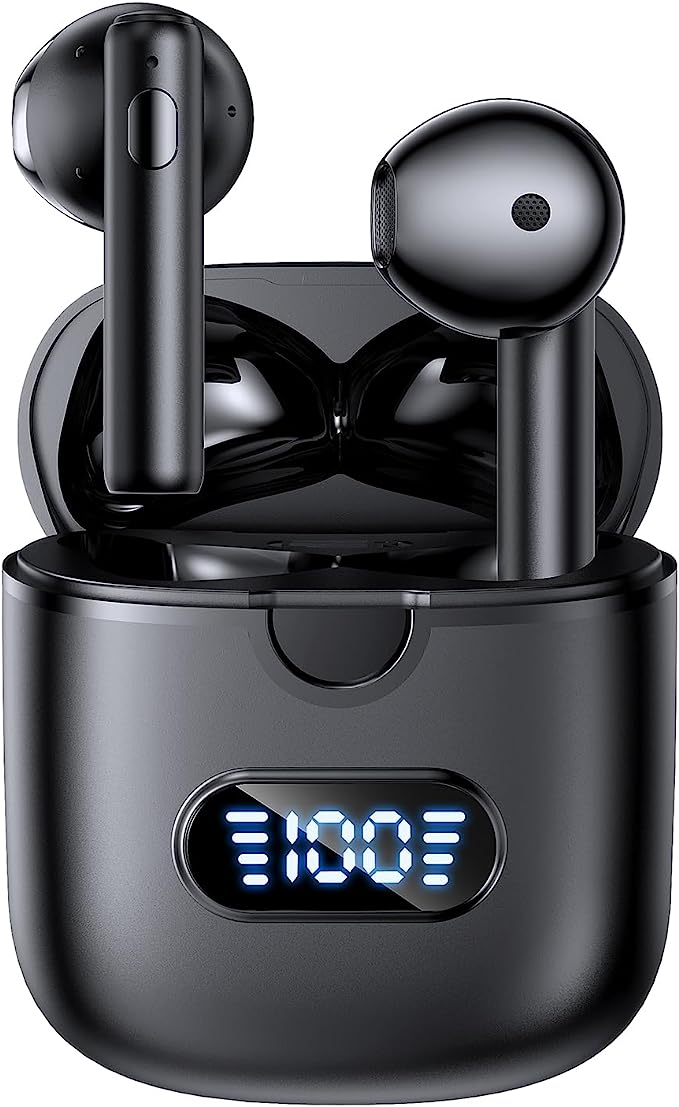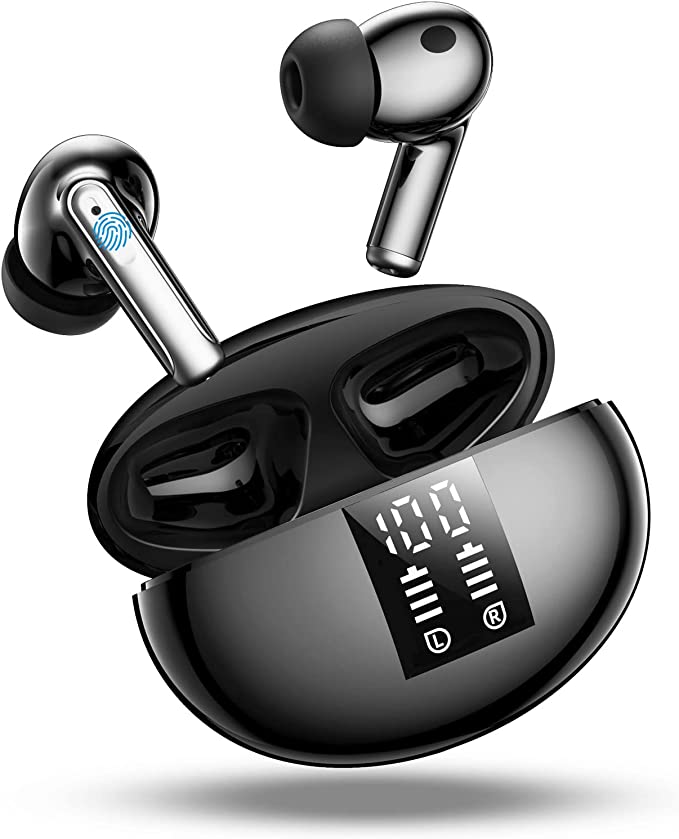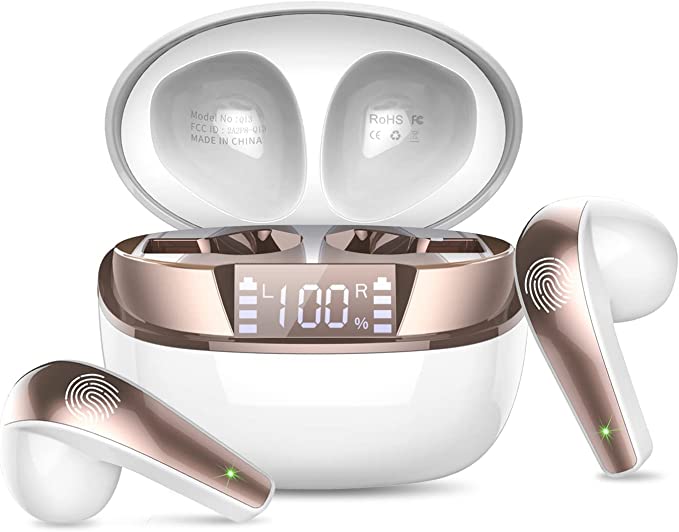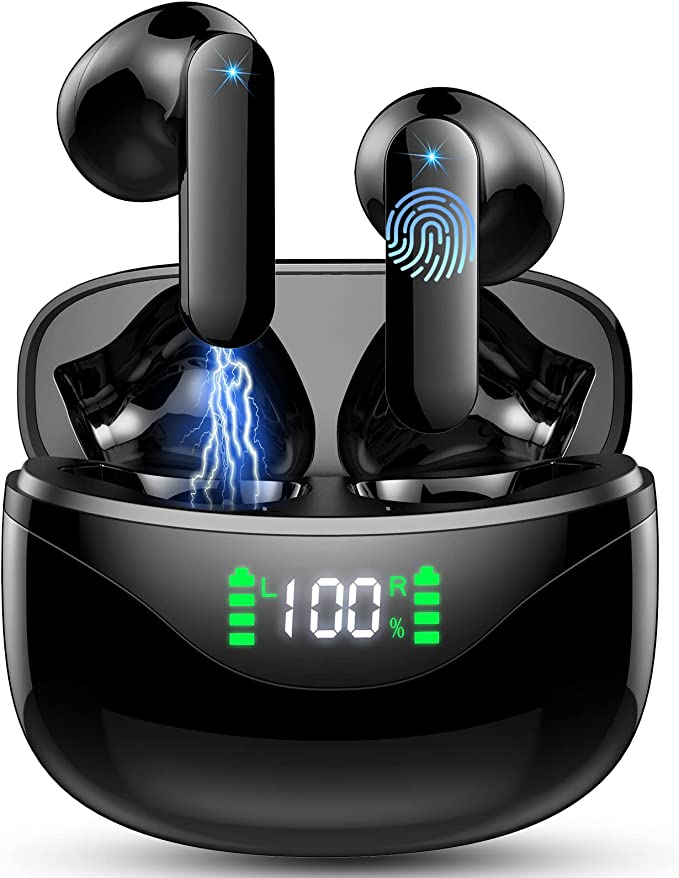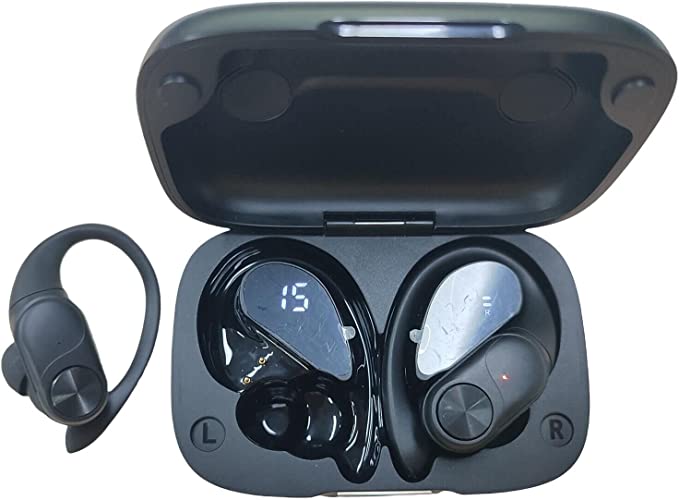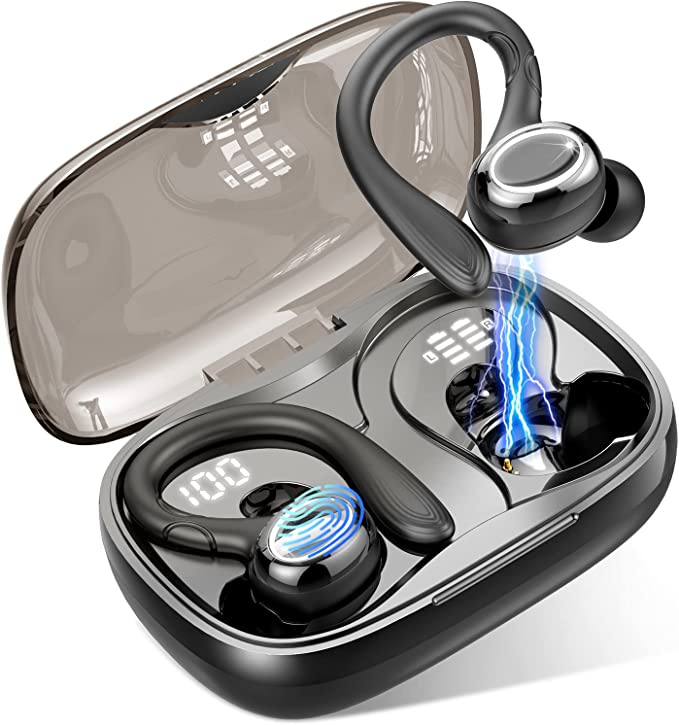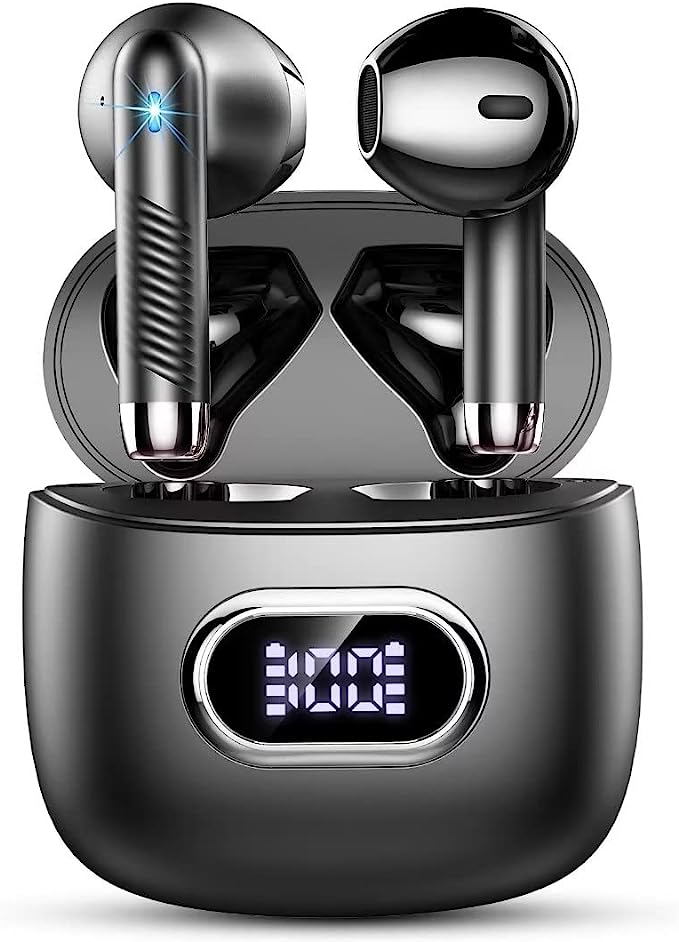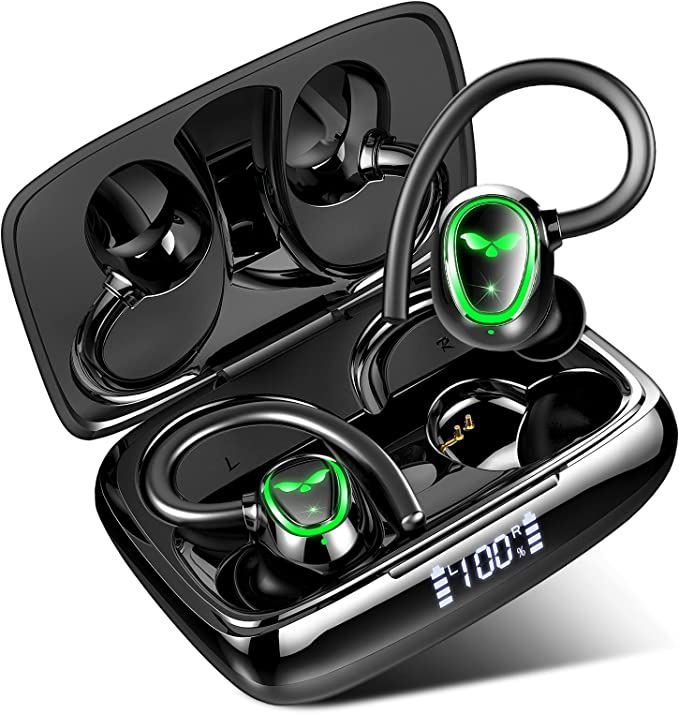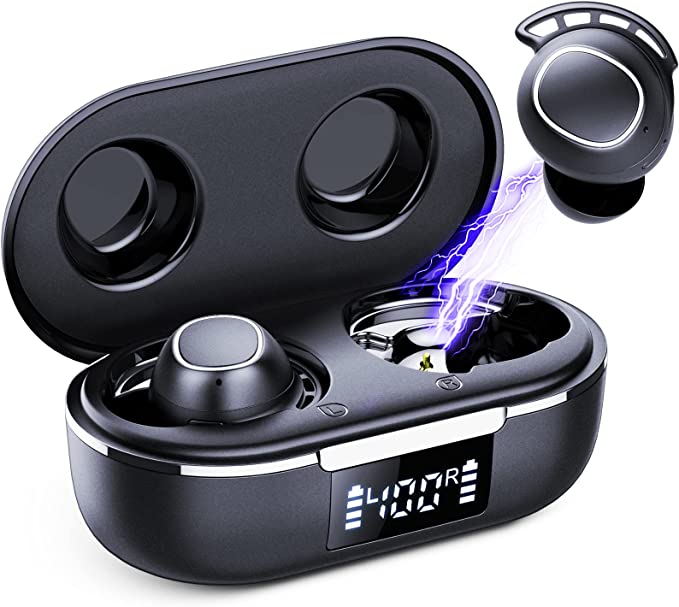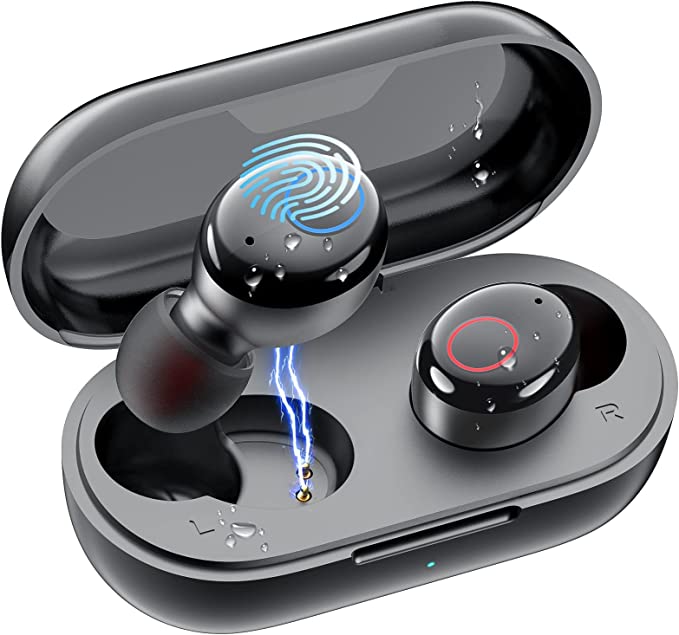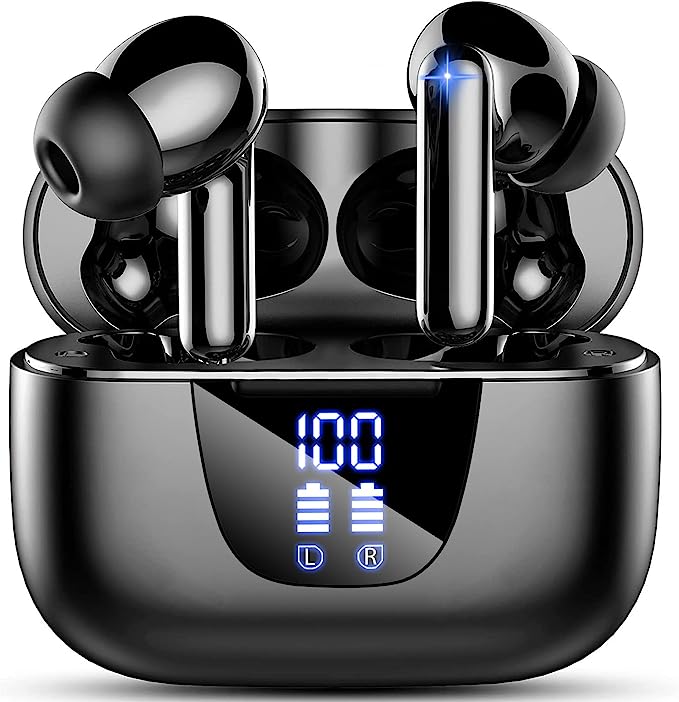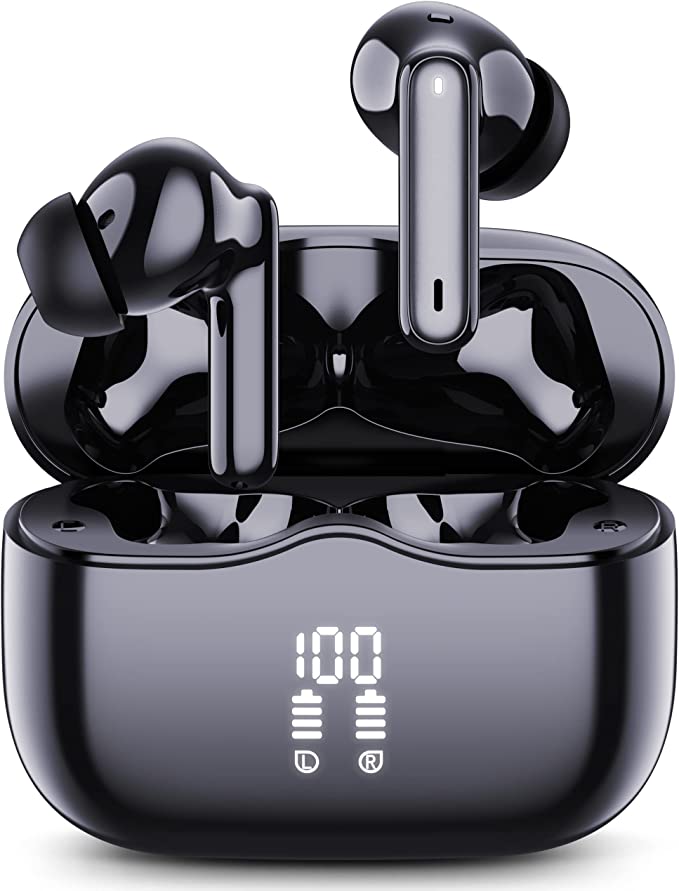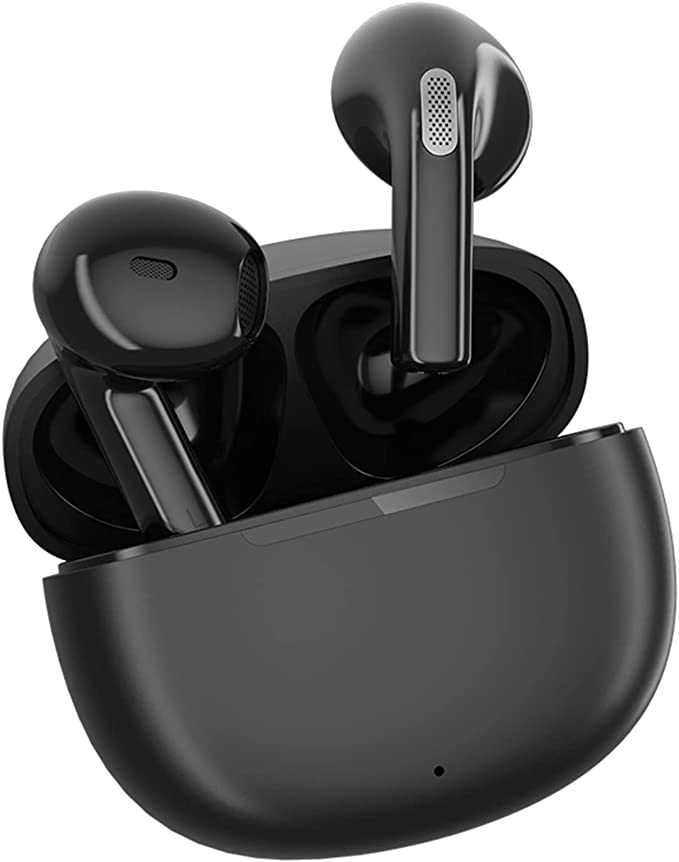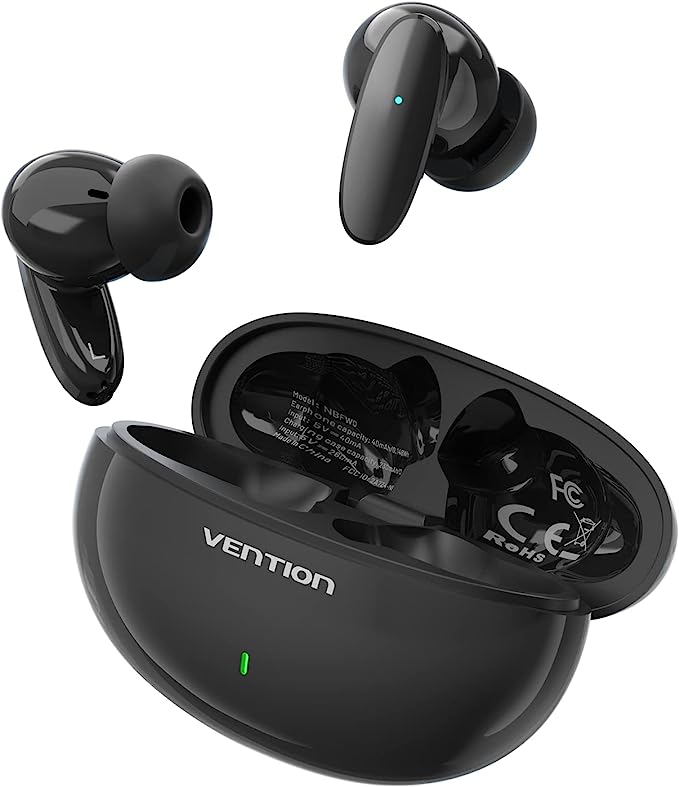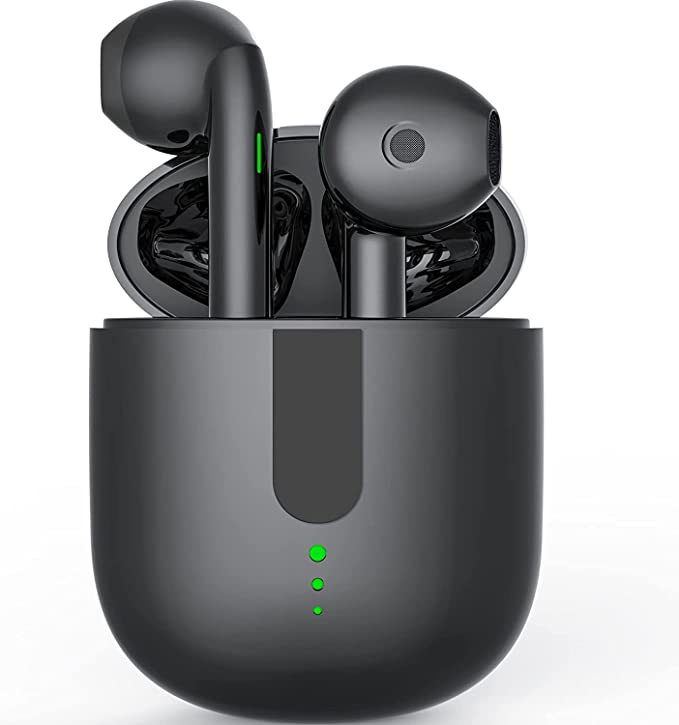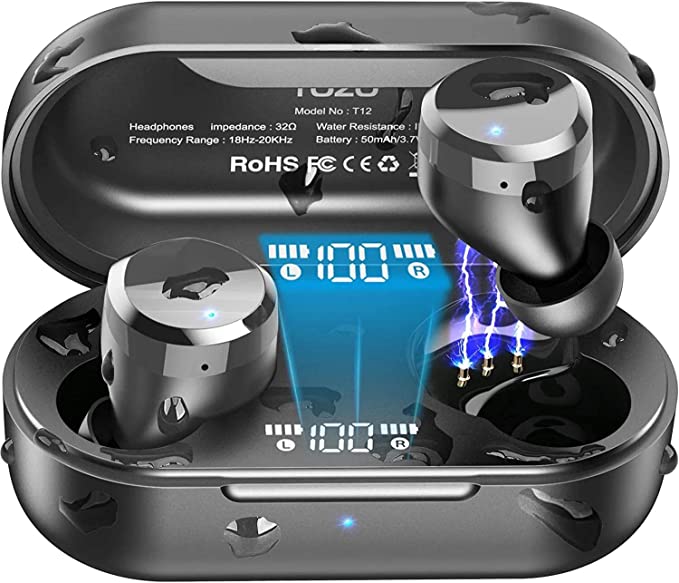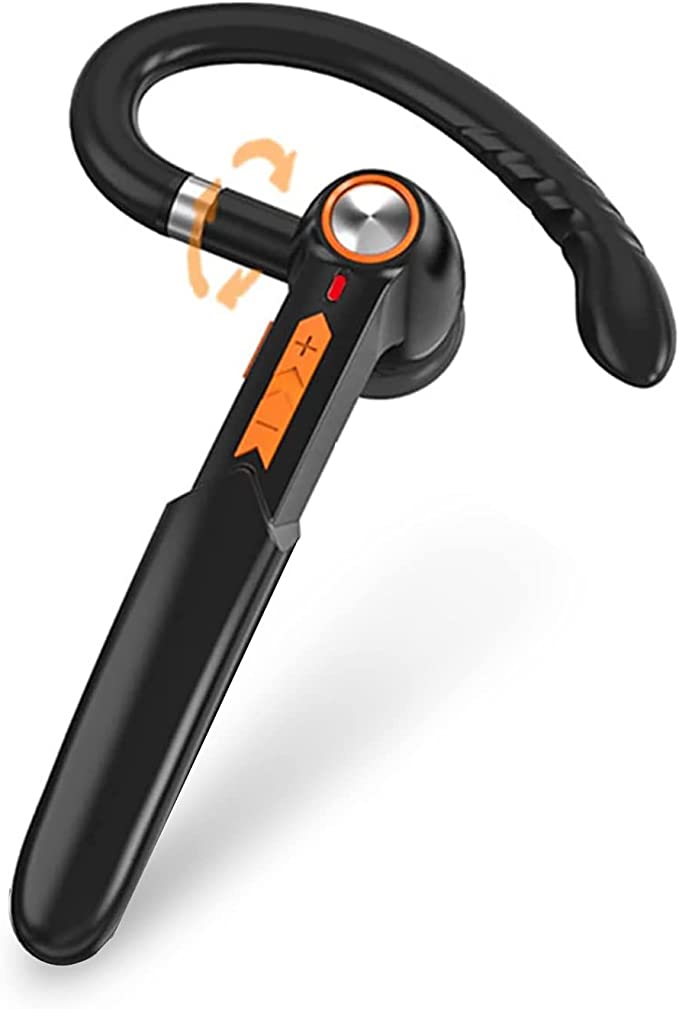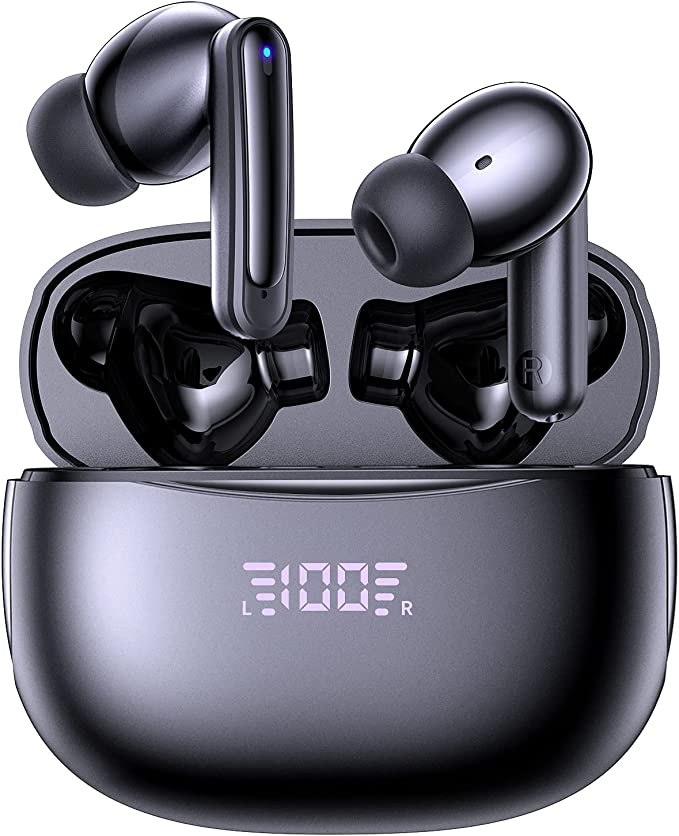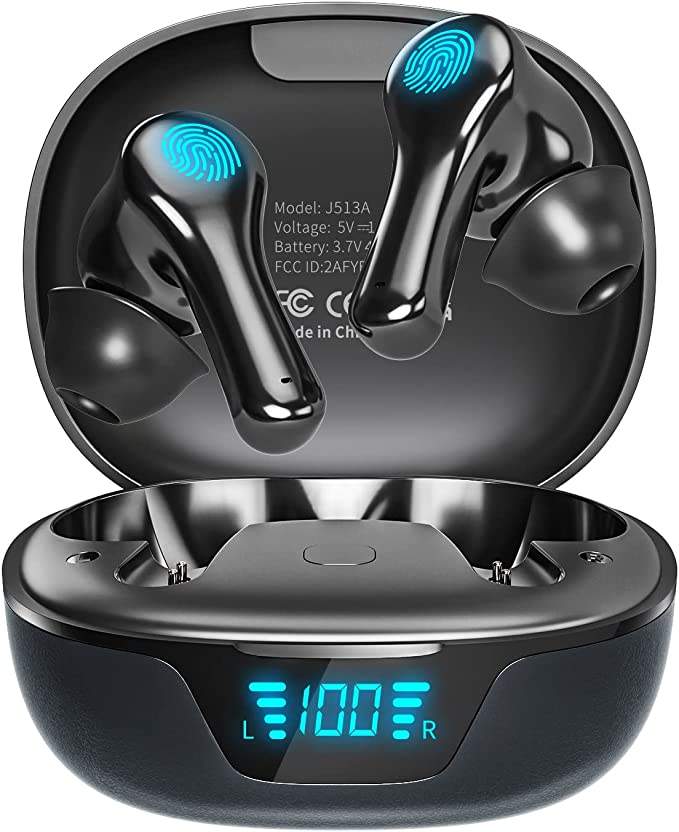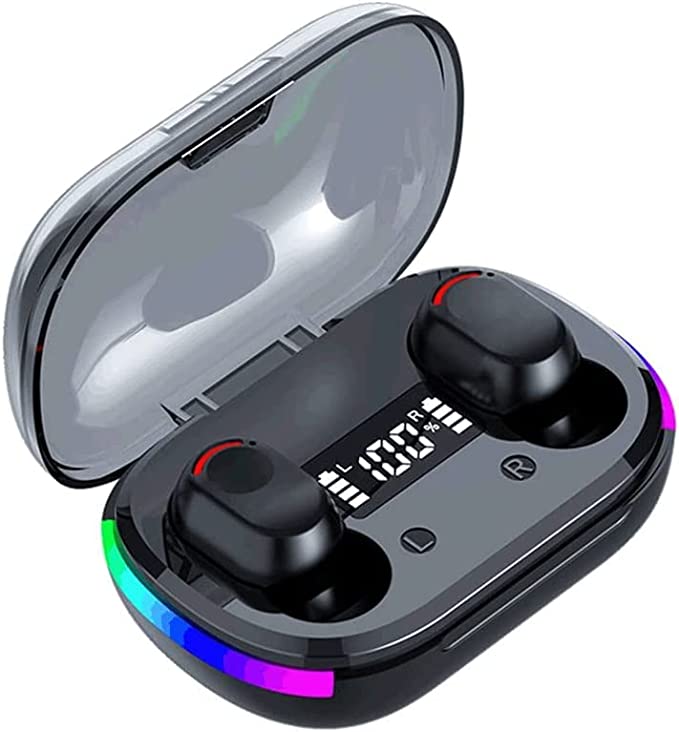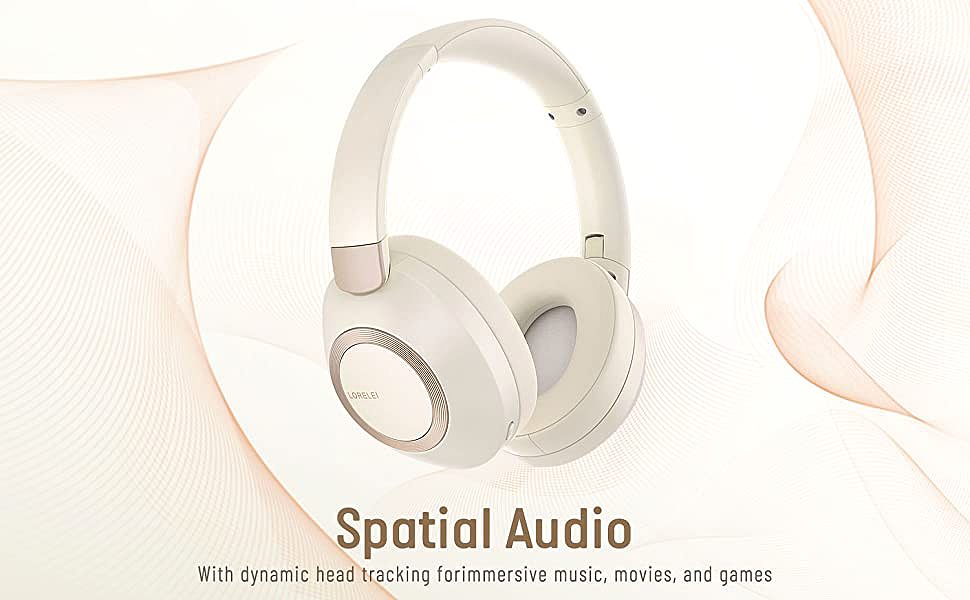Mysic J8 Wireless Earbuds: A Budget-Friendly Blast of Crystal Clear Sound
Update on June 19, 2025, 2:53 p.m.
In our hyper-connected lives, wireless earbuds have become almost an extension of ourselves. Tucked discreetly into our ears, they pipe in our favorite podcasts during the morning commute, power our workout playlists, and keep us connected through calls, all without the fuss of tangled wires. It’s a modern marvel we often take for granted. But have you ever paused to wonder how these tiny technological packages actually deliver that seamless audio experience? Let’s use the Mysic J8 Wireless Earbuds as our lens to explore the fascinating science and engineering that power the everyday magic of wireless sound.

The Unseen Handshake: Decoding Bluetooth 5.3 and Seamless Connectivity
At the very core of your wireless freedom is Bluetooth. The Mysic J8 earbuds come equipped with Bluetooth 5.3, a recent iteration of this ubiquitous technology. You might see version numbers like this tossed around, but what do they truly mean for your listening experience?
Think of Bluetooth’s journey. It began as a humble cable-replacement technology, envisioned by engineers at Ericsson in the 1990s and later standardized by the Bluetooth Special Interest Group (SIG), an organization that now boasts tens of thousands of member companies. Its goal was to allow different devices to talk to each other over short distances without physical links. Over the years, it has evolved dramatically, especially in its capacity to stream high-quality audio.
Bluetooth 5.3 isn’t a giant leap, but rather a series of smart refinements over its predecessors. Generally, newer versions like 5.3 aim for improved power efficiency (so your earbuds and phone don’t drain their batteries as quickly talking to each other), more robust connections that are less prone to annoying dropouts, especially in areas crowded with other wireless signals, and features that lay groundwork for future audio enhancements, like aspects of LE Audio (Low Energy Audio). One such refinement in the broader 5.x family is connection subrating, which allows devices to switch quickly between low-duty and high-duty cycles, improving responsiveness without a constant power drain.

When the Mysic J8 description mentions it’s “quick to connect with the lid open,” it’s highlighting a user-friendly outcome of these underlying improvements. The pairing process itself is a fascinating digital handshake. First, your earbuds announce their presence (discovery). Your phone then finds them, and they exchange credentials to establish a secure, trusted link (authentication and bonding). Modern Bluetooth chipsets, like those likely in the J8, are optimized to make this handshake incredibly swift, often initiating the moment you open the charging case.
But just connecting isn’t enough; devices need a shared language. This is where protocols like HFP (Hands-Free Profile), A2DP (Advanced Audio Distribution Profile), and AVRCP (Audio/Video Remote Control Profile) – all supported by the J8 – come in. Think of them as specialized instruction sets:
* A2DP is the workhorse for your music, enabling the streaming of high-quality stereo audio from your phone to your earbuds.
* HFP is crucial for calls, allowing you to use the earbuds as a hands-free device with your phone.
* AVRCP gives you control, letting you play, pause, skip tracks, and even adjust volume directly from the earbuds without fishing for your phone. The listed “HID” (Human Interface Device) support is a more general protocol that can cover various control inputs.

Crafting Your Personal Soundscape: The 13mm Driver and HIFI Hopes
Once that Bluetooth connection is solid, how do these tiny earbuds actually produce the rich sound that fills your ears? The answer lies primarily with a component called the driver.
Imagine a miniature loudspeaker, because that’s essentially what a driver is. Inside each Mysic J8 earbud is a 13mm driver. At its heart is a diaphragm, a thin, flexible membrane. When an electrical audio signal (carrying your music) arrives from your phone, it energizes an electromagnet within the driver. This magnet rapidly pushes and pulls the diaphragm, causing it to vibrate. These vibrations create pressure waves in the air – and those, my friends, are the sound waves that your eardrum picks up and your brain interprets as music. This is fundamental physics: sound is a mechanical wave that requires a medium, like air, to travel.
The “13mm” refers to the diameter of this diaphragm. In general, a larger driver diaphragm has the potential to move more air. This can be particularly beneficial for reproducing lower frequencies – the bass notes that give music its punch and warmth – and for achieving a fuller overall sound at comfortable listening volumes.
The J8’s product description mentions a “special alloy material diaphragm.” While the exact composition of this alloy isn’t specified, the choice of diaphragm material is critical in audio engineering. An ideal diaphragm needs to be:
1. Lightweight: To respond incredibly quickly to the rapidly changing electrical signals, especially for reproducing crisp high-frequency sounds (the “highs are pleasant” part).
2. Stiff: To resist deforming or “breaking up” during strong vibrations, which can cause distortion, particularly with powerful bass notes or at higher volumes.
Common materials range from specialized plastics like PET (Polyethylene terephthalate) or PEK (Polyetheretherketone) to more exotic options like beryllium or titanium, often in coated forms. An “alloy” suggests a blend of metals or materials engineered to strike a balance between these desirable properties.
Mysic claims these earbuds offer “HIFI Immersive Stereo Sound.” “HIFI” stands for High Fidelity, a term that has been around since the mid-20th century, originating with enthusiasts seeking to reproduce live musical performances as accurately as possible. In the context of earbuds like the J8, it signifies an aspiration to deliver sound that is faithful to the original recording, with minimal added coloration or distortion, allowing you to “restore the most initial live sound.” This means striving for clear highs, well-defined mid-range frequencies where vocals and many instruments reside, and a deep, controlled bass.

Cutting Through the Cacophony: Four Microphones for Clearer Conversations (ENC)
In today’s world, earbuds aren’t just for music; they’re vital communication tools. The Mysic J8 features “Built in 4 ENC Stereo Microphone” technology. It’s important to understand what ENC – Environmental Noise Cancellation – does, and how it differs from the more commonly discussed ANC (Active Noise Cancellation).
While ANC is primarily designed to reduce ambient noise for your listening pleasure (e.g., drowning out airplane hum while you enjoy music), ENC is all about making your voice clearer to the person on the other end of a call. It focuses on cleaning up the audio signal your microphones send out.
The “4 ENC Stereo Microphone” setup in the J8 (likely two microphones per earbud) is key to this. Here’s a simplified idea of how it works, often employing principles of beamforming and signal processing:
* Targeting Your Voice: Some microphones in the array are positioned and calibrated to preferentially pick up sound coming from the direction of your mouth.
* Capturing the Noise: Other microphones simultaneously capture the ambient sounds around you – the chatter in a coffee shop, the rumble of traffic.
* The Smart Filter: Sophisticated algorithms within the earbud’s chipset then analyze these different audio streams. By comparing the signals, the system can identify what is likely your voice and what is likely unwanted background noise. It then works to reduce the level of this environmental noise in the signal that gets transmitted.
* Analogy: Imagine two people listening in a noisy room. One is standing right next to you, hearing your voice clearly. The other is a bit further away, hearing both you and all the room noise. The ENC system is like a clever mixer that takes both inputs and tries to turn down the “room noise” track while keeping your “voice” track prominent.
This multi-microphone approach, combined with smart processing, is what helps ensure that even if you’re not in a perfectly quiet environment, your voice can still come through with clarity, making for less frustrating and more productive conversations.
The All-Day Beat: Deconstructing 42-Hour Playtime and Swift Recharges
Few things are more irksome than your earbuds dying mid-song or mid-call. The Mysic J8 boasts a substantial 42H Playtime, but this impressive figure comes from the synergy between the earbuds themselves and their charging case. The case isn’t just a convenient holder; it’s a portable power bank, equipped with a 500 mAh high-capacity lithium-ion battery.
Let’s decode “mAh.” It stands for milliampere-hours, a unit that measures electrical charge, essentially indicating the “size of the fuel tank” in the battery. A larger mAh rating generally means more energy storage. Lithium-ion (Li-ion) batteries are the standard in most modern portable electronics, from smartphones to electric cars, prized for their high energy density (a lot of power in a small package) and ability to be recharged many times.
The product information states the charging case “is enough to give bluetooth earbuds 6 times full charge.” If the total playtime is 42 hours with these 6 recharges from the case, it implies that the earbuds themselves offer around 6-7 hours of continuous playback on a single charge (42 hours / approx. 6-7 charges total including the initial one in the buds). This combined power means you can potentially go days without needing to find a wall outlet.
Adding to this convenience is USB-C fast charging, allowing the charging case itself to be fully replenished in “just 1 hour.” USB-C is the modern, reversible connector standard that, beyond its user-friendly design, can support higher power transfer rates than older USB types. Fast charging technologies often work by intelligently negotiating a higher voltage or current between the charger and the device (following standards like USB Power Delivery or proprietary methods), significantly speeding up the charging process.
And finally, the humble but incredibly useful LED Power Display on the case gives you a visual cue of the remaining charge. It’s a simple feature, but it stops you from guessing and helps avoid that dreaded low-battery anxiety.
Braving the Elements: The Engineering Behind IPX7 Waterproofing
Life happens. Whether it’s sweat during an intense workout, an unexpected rain shower on your walk, or an accidental splash, moisture is often an enemy of electronics. The Mysic J8 earbuds are rated IPX7 Waterproof. This isn’t just a marketing term; it’s a specific standard.
“IP” stands for Ingress Protection, and the rating system is defined by the International Electrotechnical Commission (IEC) in their standard IEC 60529. Let’s break down IPX7: * The first digit after “IP” (replaced by “X” here) refers to protection against solid particle ingress (like dust). An “X” means the device hasn’t been specifically rated for dust protection, or the manufacturer chose not to provide that information for this particular rating. * The second digit, “7” in this case, refers to protection against liquid ingress. A “7” signifies that the device can withstand temporary immersion in water up to 1 meter deep for about 30 minutes without harmful ingress.
Achieving this level of water resistance in such a small device involves careful engineering. The J8 product page mentions an “airtight case design and polymer nano waterproof material.” This could involve: * Precision Seals and Gaskets: Tiny rubber or silicone seals around openings like microphone ports, charging contacts, and seams between casing parts. * Nano-Coatings: Applying an ultra-thin, water-repellent (hydrophobic) coating to the internal circuitry. These coatings are so fine they don’t interfere with electrical connections but create a barrier against moisture. * Airtight Assembly: Ensuring the earbud casings are constructed and sealed in a way that prevents water from seeping in under normal pressures encountered during temporary immersion.
For you, the user, an IPX7 rating translates to practical peace of mind. You can confidently use the Mysic J8 earbuds during workouts, knowing that sweat won’t damage them. You can wear them in light to moderate rain without worry. While it doesn’t mean you should go swimming with them, it offers robust protection against common everyday encounters with moisture.
Featherlight Fidelity: The Ergonomics of In-Ear Comfort
Beyond sound and connectivity, the physical comfort of earbuds is paramount, especially for extended use. The Mysic J8 earbuds are described as “Delicate and Compact,” with each earbud weighing only 3 grams. This focus on minimizing weight is a key principle in ergonomics for wearable technology. The less an object weighs, and the better it’s distributed, the less noticeable it becomes over time, reducing fatigue and that “foreign body feeling.”
The “Wireless headphone ergonomic design” aims to ensure the earbuds fit snugly and securely within the contours of the ear canal. A good ergonomic fit not only enhances comfort but can also contribute to better passive noise isolation – by creating a physical seal, it helps block out some external sounds even before any electronic noise cancellation kicks in. This, in turn, can allow you to enjoy your audio at lower, safer volumes.

Conclusion: The Pocket-Sized Powerhouses of Modern Audio
The Mysic J8 Wireless Earbuds, with their Bluetooth 5.3 connectivity, 13mm drivers, 4-mic ENC system, impressive 42-hour total playtime, and robust IPX7 waterproofing, serve as a compelling example of how much sophisticated audio engineering can be packed into an accessible, everyday device. From the invisible dance of Bluetooth signals ensuring a stable connection, to the meticulous design of the drivers vibrating to recreate your favorite songs, and the clever algorithms working to keep your calls clear, these tiny companions are a testament to the quiet revolution in personal audio.
As technology continues to advance, we can expect even more power, more features, and more refined experiences to be distilled into these pocket-sized powerhouses. For now, understanding a bit of the science behind them can help us better appreciate the invisible technology that seamlessly enriches our daily soundscape.
